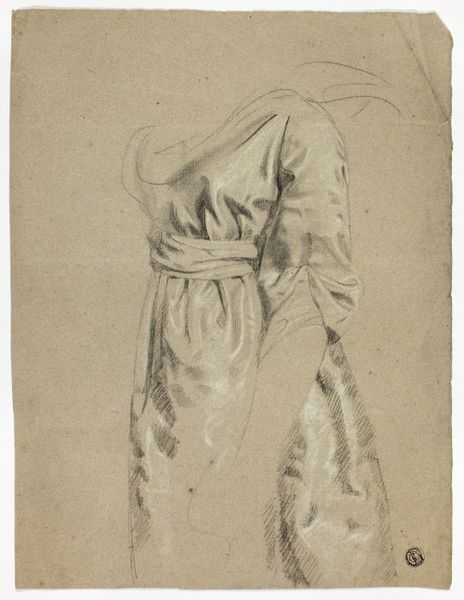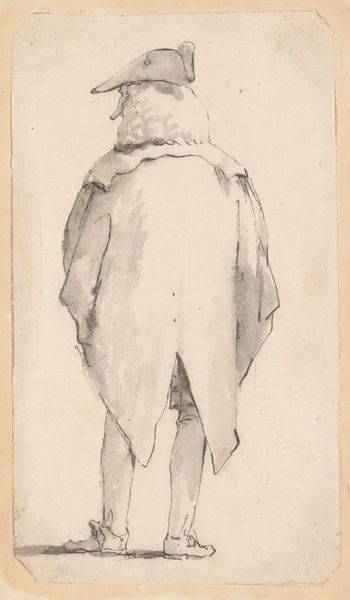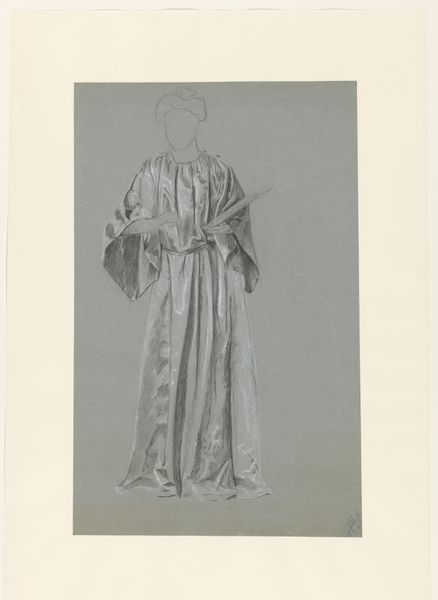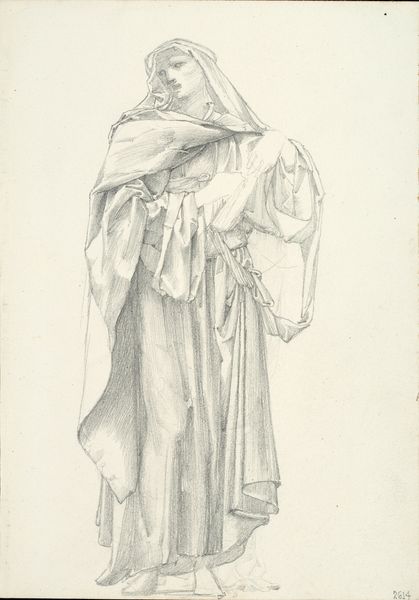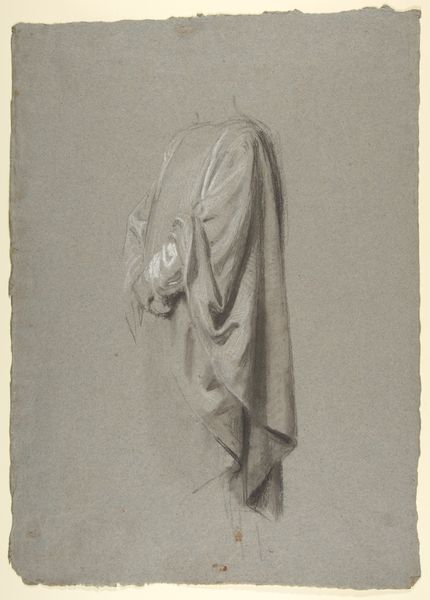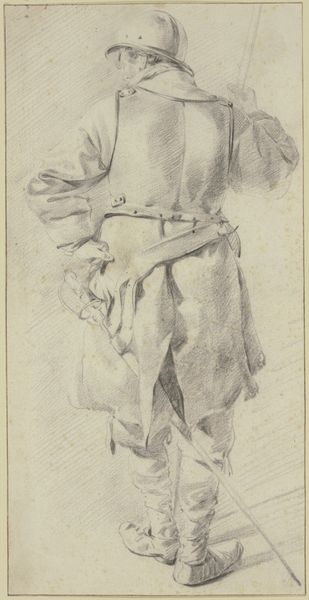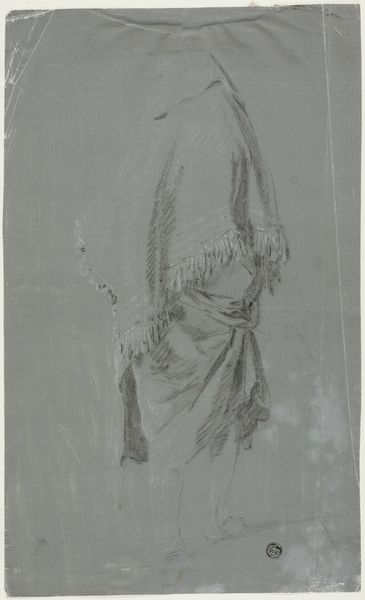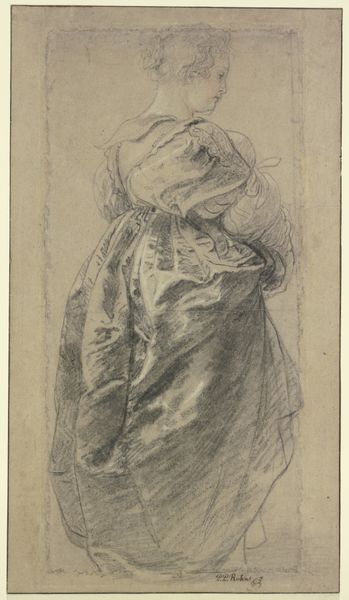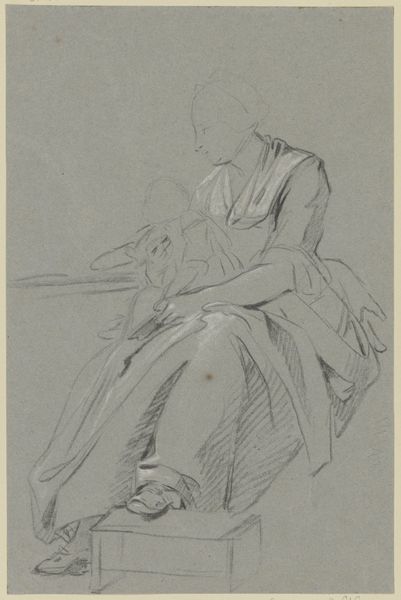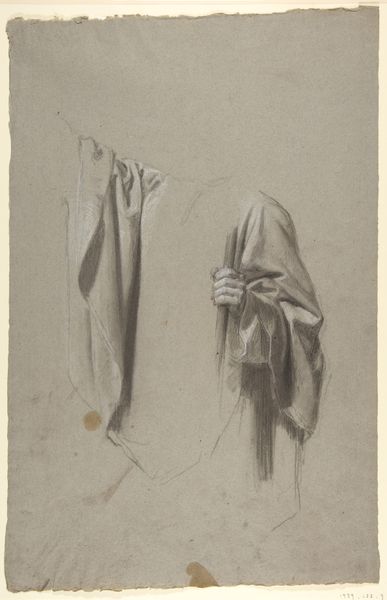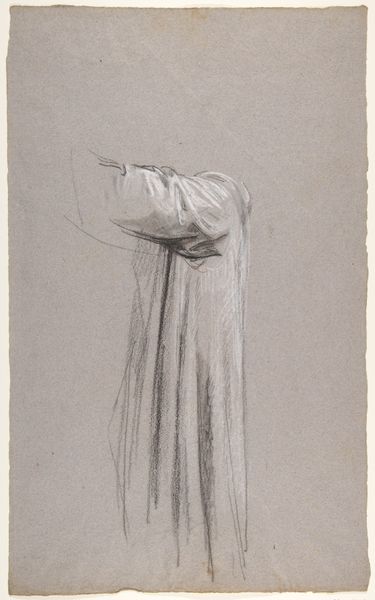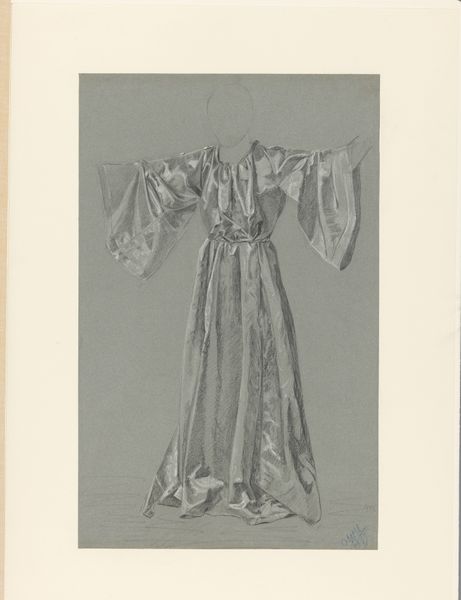
drawing, pencil, charcoal
#
portrait
#
drawing
#
charcoal drawing
#
romanticism
#
pencil
#
charcoal
#
watercolor
Dimensions: overall: 40.7 x 35.5 cm (16 x 14 in.)
Copyright: National Gallery of Art: CC0 1.0
Curator: Let's turn our attention to this drawing by John Vanderlyn, executed around 1838, entitled "The Cape of Pinzon." Editor: My initial response is one of intrigued incompleteness. There's a ghostly quality to the figure, enhanced by the delicate medium and the absence of facial features. The cape seems to possess a life of its own. Curator: Indeed. The restrained palette and careful rendering direct the viewer's focus toward the structural elegance of the draped fabric and the pose itself. Notice how Vanderlyn uses the contrast between the precise lines of the garment and the sketchier rendering of the figure to emphasize volume and form. Editor: The cape, draped so deliberately, suggests a narrative. "Pinzon" evokes exploration, discovery perhaps, tying into a symbolic history of adventure. What does this cape represent in that context? Is it authority? Protection? Something taken or something given? Curator: An interesting conjecture. I'm drawn to the formal aspects, the way the lines coalesce to create a sense of movement. Consider how the artist employs hatching and cross-hatching to suggest texture and shadow. Note the classical contrapposto stance which suggests the sitter had artistic training, likely in Europe. The use of grey paper in drawing had fallen out of fashion by 1838, especially as commercial bright white paper was widely available. Editor: That choice of a now archaic style may have symbolic implications. A romantic nostalgia, perhaps? Curator: Perhaps, but it certainly establishes tonal values against which the artist develops areas of strong light and shade. I’d say Vanderlyn aimed to achieve a subtle equilibrium. It avoids histrionics common at the time and conveys what some critics referred to at the time as ‘calm’. Editor: Considering Vanderlyn’s tendency to depict historical and allegorical figures, perhaps this study speaks to the broader concept of how clothing imbues the wearer with a story. What the uniform means and what actions it causes or symbolizes, almost more so than the wearer's qualities as an individual. Curator: A well-considered point! A way to access meaning through sartorial interpretation. It serves as a useful key. Editor: This piece allows us to engage with it across many different planes, from simple surface appreciation to much broader meaning making. It makes you ponder about how Vanderlyn would build all of those different types of meaning making together in this piece, it may act almost as its very own key.
Comments
No comments
Be the first to comment and join the conversation on the ultimate creative platform.
